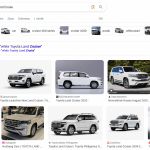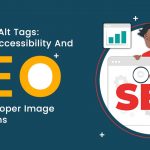Best Image Sizes for Website for Website Pages, Blog Posts, Product Images, Favicons and Logo
|
Getting your Trinity Audio player ready...
|
When it comes to creating a visually appealing and user-friendly website, choosing the right image sizes is crucial. Images play a significant role in engaging visitors and conveying information effectively. Different types of images on a website, such as those on web pages, blog posts, product images, favicons, and logos, have specific size requirements to ensure optimal display and performance across various devices. In this article, we will explore the best image sizes for each of these categories to help you enhance the visual appeal and functionality of your website.
Website Pages
Images on website pages serve multiple purposes, from enhancing the aesthetics of the site to providing visual context for content. It is essential to optimize image sizes for web pages to ensure fast loading times and a seamless user experience. Here are some recommended image sizes for website pages:
- Header Images: For header images that span the width of the page, a size of around 1920 pixels wide by 1080 pixels high is ideal.
- Thumbnail Images: Thumbnail images used in grids or lists should typically be around 400 pixels by 400 pixels to maintain clarity without sacrificing loading speed.
- Background Images: Background images should be large enough to cover the entire background but not too large to slow down loading times. A size of 1600 pixels wide by 900 pixels high is commonly used.
Blog Posts
In blog posts, images are essential for breaking up text, illustrating concepts, and making content more engaging. Here are some recommended image sizes for blog posts:
- Featured Images: Featured images at the top of blog posts should be around 1200 pixels wide by 675 pixels high for optimal display.
- Inline Images: Inline images within blog content can vary in size but should generally be between 800-1200 pixels wide depending on layout.
Product Images
Product images are critical for e-commerce websites as they directly impact purchasing decisions. Here are some recommended image sizes for product images:
- Main Product Image: The main product image should be high resolution with a size of at least 1000 pixels by 1000 pixels to allow users to zoom in for details.
- Thumbnail Images: Thumbnail images on product category pages should be around 300 pixels by 300 pixels to provide a clear preview without slowing down load times.
Favicons
Favicons are small icons displayed in the browser tab next to the page title. They help users identify your website easily. The standard favicon size is 16×16 pixels or 32×32 pixels for higher resolution displays.
Logo
A logo is a crucial element of branding and should be displayed prominently on your website. The ideal logo size varies depending on its placement:
- Header Logo: For logos displayed in the header of your website, a size of around 250 pixels wide by 50 pixels high works well.
- Footer Logo: Logos in footers can be slightly smaller at around 150 pixels wide by 30 pixels high.
By following these recommended image sizes for different elements of your website, you can ensure that your site looks professional, loads quickly, and provides an excellent user experience.

 Previous Post
Previous Post Next Post
Next Post
Paldies